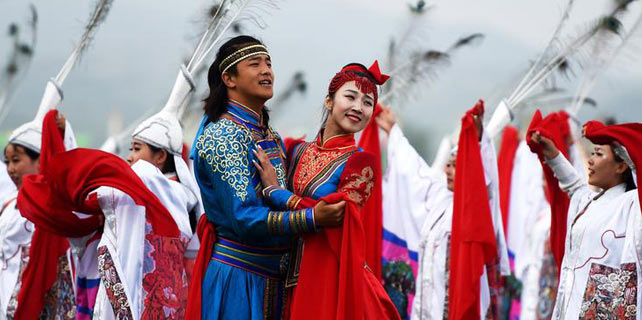Africa's early China connection
Strong evidence points to historical ties, including migration, over many centuries - bringing a resurgence of interest
Today's growing relationship between China and Africa has revived interest in understanding early interactions between the two societies. Evidence of trade goes back a long way. African crops like millet and sorghum appeared in China as early as the Shang Dynasty (c. 16th century-11th century BC) while Asian bananas and rice found their way to Africa at a similarly early time.
During the Tang Dynasty (618-907), connections between East Africa and China became more regular. The continuous appearance of Chinese porcelain and stoneware in key medieval towns in East Africa from the Tang through to the Qing Dynasty (1644-1911) points to more than 1,300 years of continuous interaction between China and East Africa.
In our own time, the People's Republic of China has become a significant partner and friend to the people of East Africa.
According the World Bank, China is Kenya's largest creditor, accounting for 57 percent of the country's external debt. Thus, the economies of China and East Africa have been intertwined to the point where there exists an abundant body of data warranting scholarly scrutiny.
A conference held on Manda Island, Kenya, from July 27 to 29 delved into Sino-African contacts predating Admiral Zheng He's 14th century expedition by more than 600 years.
Unprecedented technological and scientific advances in Asia, from the Tang through Song (960-1279) dynasties were followed by political stability throughout Asia. Free movement of traders, merchants, scholars, and adventurers led to a transfer of knowledge, culture and people. Entrepreneurs invested in large industrial complexes that manufactured silk, porcelain, beads, jewelry, cloth, spices and other items for what became a truly global economy.
The rise of urbanism in East Africa dates to this period. Our ongoing joint archaeological research at Manda between American University and Sun Yat-sen University, in collaboration with the National Museums of Kenya, has revealed for the first time five generations of an African community that developed from a small village - built in traditional mud-on-wood frame style - to a prominent town connected to the global Maritime Silk Road trade.
Manda developed into a dynamic center with a lucrative cottage industry specializing in the making and selling of beads, cloth and marine products to its inland neighbors, which they traded for aromatics, lumber, honey, beeswax and grains, among other inland products.
By the seventh century, Manda's prominence attracted international attention. The native people of Manda gained in prosperity and began investing in permanent homes built of mud brick. By the ninth century, they erected homes built of coral rag and blocks. They imported surplus goods from as far afield as Iran, Iraq, India and China.
Our excavations in 2012 and 2017 have recovered remains of Islamic and Chinese jewelry, ceramics - stoneware and porcelain - glass, beads and coinage which, taken together, provide strong evidence for nearly 1,300 years of continuous, mostly peaceful, interaction between Asian and African peoples.
In reality, bulk trade consisted of foodstuffs and food crops, including rice, honey, sorghum and millet; textiles (silk and cotton cloth); spices and aromatic products (myrrh and frankincense); and construction materials (mangrove posts and teak), which are muted in the archaeological record because they have not survived.
Zhu Tiequan, an associate professor of archaeology at the School of Sociology and Anthropology at Sun Yat-sen University, recently identified Tang Dynasty porcelain at Manda, including Tongguan and Qionglai wares (Changsha painted wares) and gray-green ware of the Yue type, Guangdong coastal green, white porcelain and white stoneware, possibly from kilns in Fujian, Guangdong or Zhejiang.
Our 2012 expedition recovered two imperial-issue coins minted between 1403 and 1424, coinciding with the much-celebrated voyages of Admiral Zheng He and pointing to a possible diplomatic visit of the admiral to Manda.
Finally, there was the recovery by Dong Yu, professor of Shandong University, of three bodies at Manda bearing clear ancient East Asian DNA and postdating Admiral Zheng He's visit. This provides crucial evidence for direct Chinese interaction, and even migration, to East Africa in premodern times.
Our evidence is still tentative. However, our research so far points to the bidirectional interactions between China and Africa and their long-standing histories that predate European contact and colonization.
The author is a professor of Anthropology at American University, Washington, DC, USA. The views do not necessarily reflect those of China Daily.
(China Daily Africa Weekly 09/15/2017 page9)




















